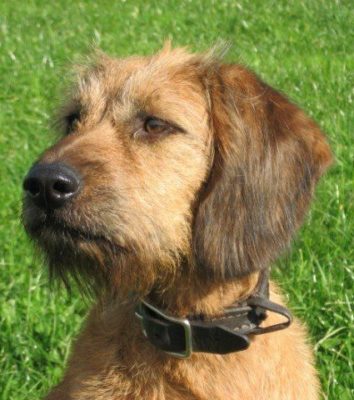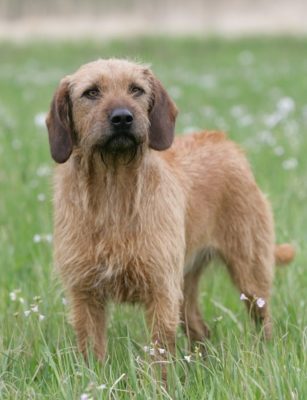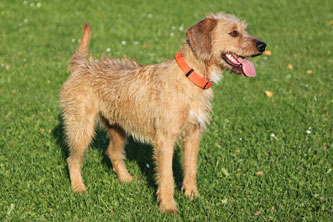Styrian Coarse-haired Hound
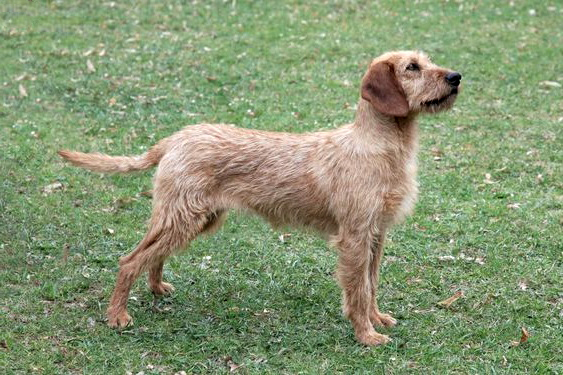
The sociable and friendly Styrian Coarse-haired Hound is completely indifferent to strangers and does not bark without reason. This dog is unrivaled: its sturdy and purposeful character balances with loyalty and obedience.
Table of Contents
Breed Information
| Another Name | Steirische Rauhhaarbracke, Peintinger Bracke, Steirische Rauhhaarige Hochgebirgsbracke, Wirehair Styrian Mountain |
| Origin | Austria |
| Height | Males 47-53 cm Females 45-51 cm |
| Weight | 15-18 kg |
| Fur | Tough and Rough |
| Color | Pale yellow |
| Lifespan | 12-14 years |
| FCI Classification | Scent hounds and related breeds |
| Group | Hunting dogs |
| Price | From $600 |
Breed Photos
Origin History
The Styrian Coarse-haired Hound history goes back to distant Austria, where Karl Peintinger bred the breed. He lived in the province of Styria, where the second name of the dog comes from. Carl was the owner of the plant, and like all Austrians, loved hunting. Therefore, the Brakk came from the crossing of three breeds of hounds at once.
Knowing the country’s peculiarities, we can safely assume that this breed has stamina, health, and the necessary hunting skills. The main prey is wild boar, hare, or fox. The Styrian Coarse-haired Hound is attuned to stalking prey but does not include aggression. The breed is adapted to cold climates, and its coat protects it from winds.
Appearance
The hound has a very unusual appearance. It has a mustache and beard on its muzzle. The ears are floppy and have rounded ends. The coat is stiff and hard, with slight waviness. The color of the coat is yellowish-yellow, and white marking on the chest is possible. The body is broad and strong. The chest is deep, and the belly is moderately trimmed.
Character
The sociable and friendly Styrian Coarse-haired Hound is completely indifferent to strangers and does not bark without reason. This dog is unrivaled: its sturdy and purposeful character balances with loyalty and obedience.
The hound is a team player. Therefore, the Styrian Coarse-haired Hound easily gets along with other pets, but sometimes the hunting instinct can wake up; you need to watch out for this.
The owner must become a real authority for the pet. The Styrian Coarse-haired Hound is considered a family dog but is rather indifferent to children.
First of all, the dog needs a long walk with enough exercise. Therefore, the apartment will not be the best option for the life of a Styrian Coarse-haired Hound.
Care
The Styrian Coarse-haired Hound is completely unpretentious in its care. Its coat repels water and dirt, but it needs a good combing out of clinging plants after every walk.
During the hunt, the dog can seriously damage the eyes’ ears and mucous membranes, so they require special attention. Dental hygiene should not be forgotten.
Training
The energetic and venturesome hunter is easy to train. The Styrian Coarse-haired Hound is famous for its intelligence. A calm and balanced temperament allows the pet to listen to the owner in everything. Even being in a large crowd of people and other dogs, the brakk will notice only his owner. Of course, do not forget the treats for completed tasks.
Common Diseases
Dirt can accumulate in the ear canals of a Styrian Coarse-haired Hound and cause an infection or inflammatory disease. Therefore, it is a good idea to inspect and treat your pet’s ears frequently. Unscheduled visits to the veterinarian will keep your pet safe. Vaccinations should not be forgotten, as the hound spends a lot of time outdoors.
Styrian Coarse-haired Hound is prone:
- dysplasia;
- pulmonary artery stenosis of the heart;
- urolithiasis.
Nutrition
The breed is not at all finicky about nutrition. The most important thing is always to have fresh and nutritious food in the diet, especially meat. Porridges and vegetables will be a great addition. But you should not spoil the dog and feed him too often.
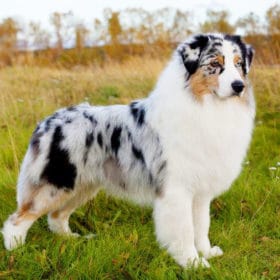 Australian Shepherd (Aussie)
Australian Shepherd (Aussie)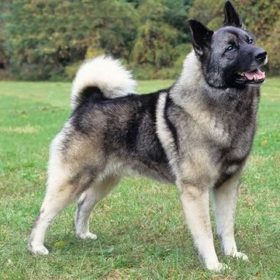 Norwegian Elkhound
Norwegian Elkhound Spinone Italiano
Spinone Italiano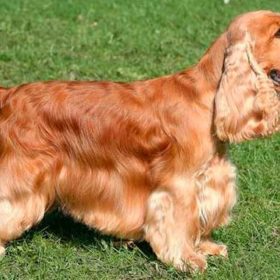 English Cocker Spaniel
English Cocker Spaniel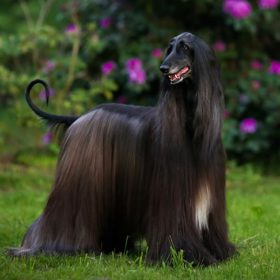 Afghan Hound
Afghan Hound Lithuanian Hound
Lithuanian Hound